Student Blog
What are OS/OT?
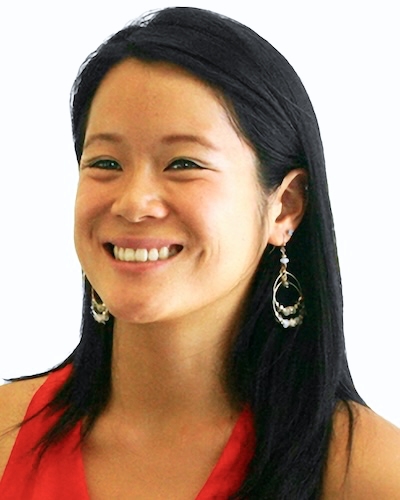
I Love the Student Run Clinic! ⟩
February 6, 2014, by Clarissa
Getting Involved What are OS/OT?
The Student Run Clinic (SRC) is run by students in the Pharmacy, Physician Assistant, Medical, and OT programs at USC. I think the interdisciplinary aspect is so cool and the fact that students run the entire organization amazes me. The clinic operates on Saturdays in the Eisner Family Medicine Center in downtown Los Angeles, which is a primary care clinic. Currently, OTs do not have a strong presence in primary care, which is so unfortunate because OTs have a lot of potential to impact patients’ lives upon their first encounter with health care. We’re working on bringing OT into this new field though! Being part of this emerging practice area is really exciting!
My position on the SRC board is Care Team Coordinator (CTC), which means that I act as the team leader. Each team consists of representatives from the occupational therapy, pharmacy, physician’s assistant, and medical schools. Each individual discipline goes in to see the patient before we all huddle together for a treatment plan. Our preceptors are also there to assist with the learning process. My job as the CTC is to guide the team through the protocol with the patient and facilitate discussion between the team members. On certain clinic dates, I also have the opportunity to volunteer as the OT instead of the CTC. Acting in both roles has been great because I’ve been able to work on different skill sets with each.
I’ve learned a lot since my initial involvement with the Student Run Clinic! When I’m the OT volunteer, I practice treatment planning with the interdisciplinary team, collaborating with the patient about their goals, proper documentation, and how to educate other professions as well as the patient about OT. When I’m the CTC, I learn how to put together various pieces of the puzzle. Multi-tasking is a key aspect of being a CTC — I need to ensure the team has a good learning experience, the patient receives the care they need, and that the team moves efficiently. I definitely am learning how to be assertive! It’s been a challenge and I’ve had my share of uncomfortable “I don’t know what to do” moments but who doesn’t while learning?
To sum it all up — Student Run Clinic rocks!
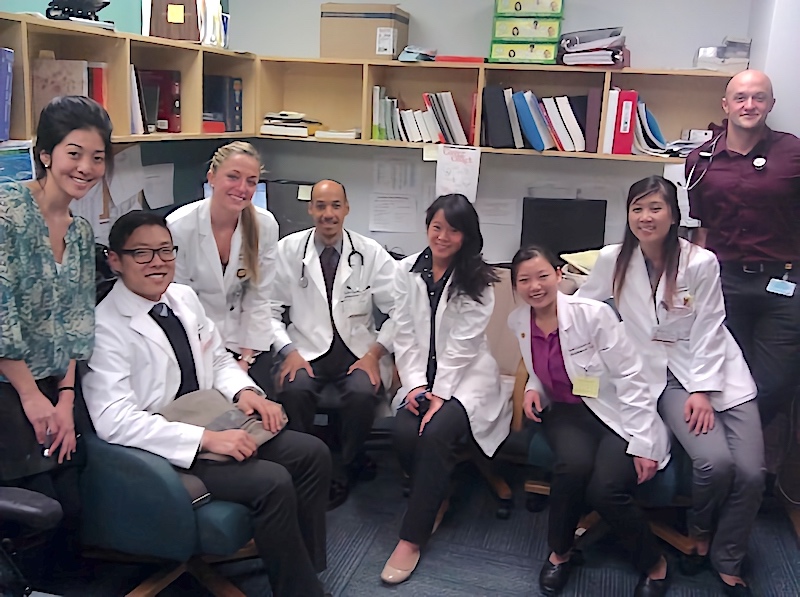
Here’s a picture of my team and our preceptor from the last time I was in the clinic
⋯

Out with Cohorts, in with Electives! ⟩
January 30, 2014, by Clarissa
Classes What are OS/OT?
For the first 1.5 years of this program, I pretty much had my schedule set for me with required classes. The way it works is that we are split up into 3 cohorts at the beginning of our program (A, B, or C) and each cohort rotates through what we call immersion courses which are in the different practice areas of our profession — Physical Disabilities, Mental Health, and Pediatrics. We grow really close to our cohorts because we pretty much see them all day, every day. We still see classmates outside of our cohorts as well, though, because we have courses outside of our immersion.
Our final semester is different because we no longer have cohorts and now have electives! I wish I could take all the electives that existed! I ended up selecting Hands, Dysphagia, Early Intervention, and Motor Control as my elective courses. They’re all great courses and I love all the application. In dysphagia, we learn about treating patients who have difficulty swallowing. Last week, my partner and I looked at one another’s oral anatomy and tested each other’s gag reflexes (while my friend Kathy photobombed us). It was cool! Just not so cool when it was my turn:
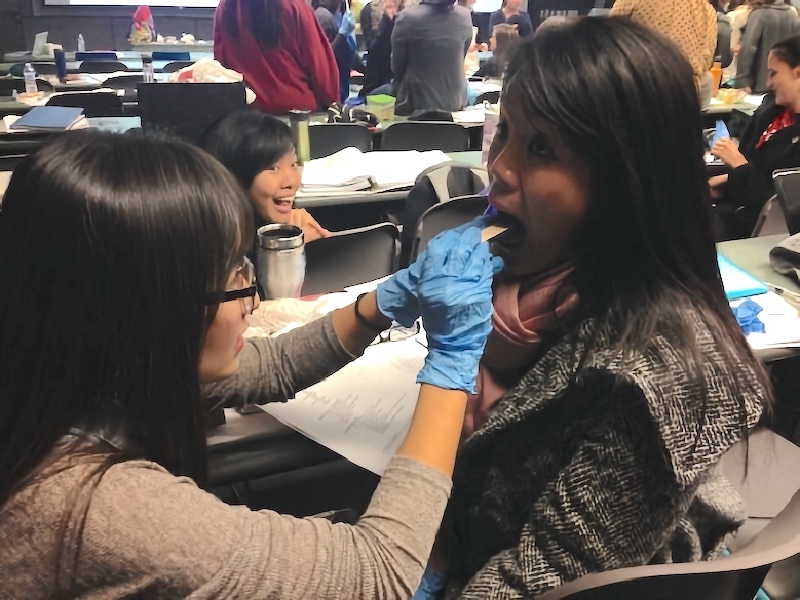
Twice a week, I also go to Rancho Los Amigos National Rehabilitation Center for my motor control course — once to learn in a large classroom setting and practice techniques on my classmates and once for lab where I share my instructor with just one other person and apply what we learned on a patient. We’re currently learning on the stroke unit and I’ve so far found this class really valuable. The instructor is so good and I’m learning so much! In this picture, I’m mobilizing my friend/patient Judy’s scapula. Later on, I cuddled up to my friend Angela (aka patient who had a stroke) so we could practice educating patients how to manage sleeping in their home with their spouse. Lastly, the picture includes my friend Megan who put together a wheelchair BLINDFOLDED! Yup, we are definitely getting the wheelchair management techniques down cold!
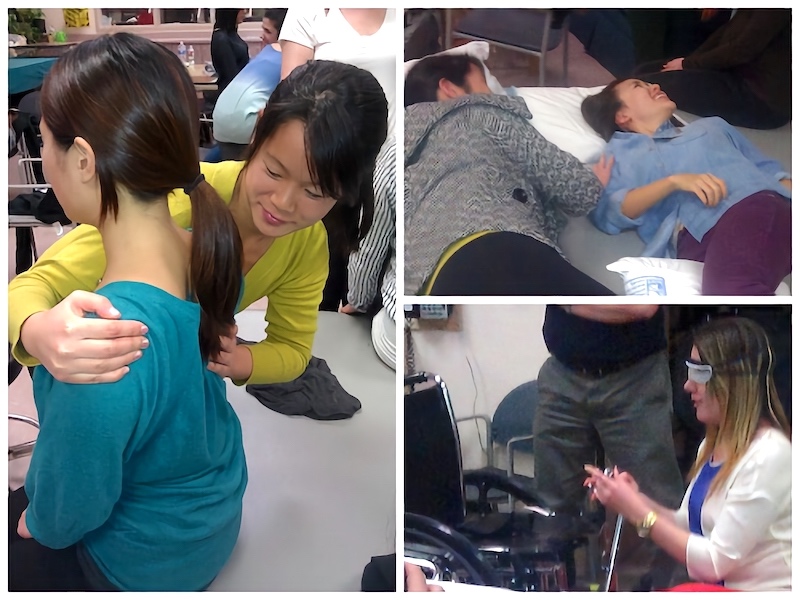
⋯

Uselessness is Gorgeous ⟩
January 29, 2014, by Clarissa
Life Hacks School/Life Balance What are OS/OT?
Normally, there’s a little lull at the beginning of the semester before it goes into full swing but this semester hasn’t been like that at all. I hit the ground running once the semester began. I’m really busy and I love it. In order to stay balanced, though, I’ve started thinking a lot about concepts I learned last semester in my Health Promotion and Wellness class. Particularly, I thought about a lecture we had about happiness and how I can ensure I have personally meaningful moments in the midst of my hectic schedule.
I thought our happiness lecture related really well to an art exhibit I saw when I visited Chicago over the summer. It’s called “The Happy Show” by Stefan Sagmeister, an individual who struggled with depression after his mother’s death. Because of his depression, he became interested in whether or not people can train their minds to be happy, similar to how people train their bodies. This one particularly beautiful art piece of his was made out of post-it notes and spelled out “Uselessness is gorgeous.” It looked like this:
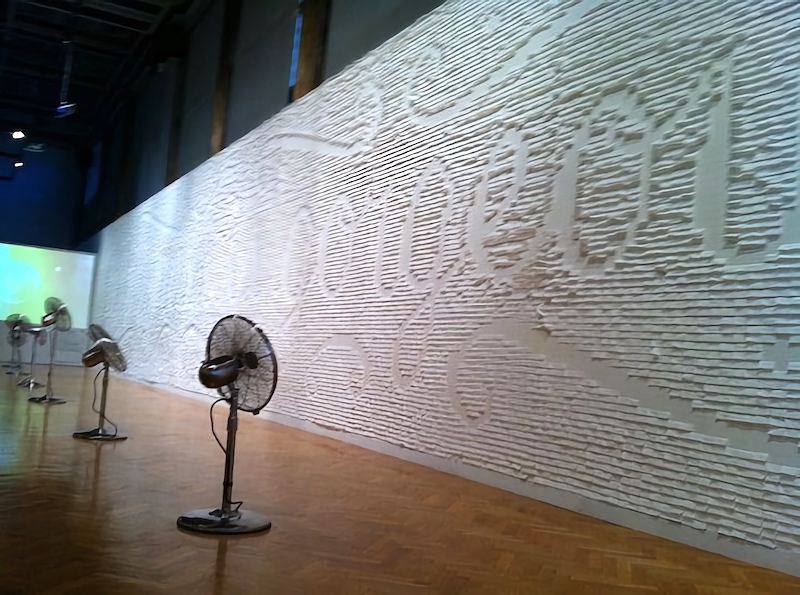
Sagmeister accompanied this art piece with a personal experience that relates to the concept of “flow” which we also learned about in our Health Promotion and Wellness class. One experiences flow when completely absorbed in a satisfying activity and ceases to notice the passage of time. By this art piece, he wrote:
Uselessness is gorgeous. I came up with a reputable technique to artificially produce a moment of bliss: take a scooter, drive it on a beautiful road with little traffic so I can ride without a helmet and feel the wind in my hair while listening to about a dozen carefully selected songs, music that I don’t know well (so it won’t have any baggage) but am likely going to like. And very important: there can be no purpose to the drive, just cruising without any goal. This recipe would send shivers down my spine every time. To identify something without any goal and without any function has its own beauty: it’s the difference between a walk in the park and a commute. It’s the different between art and design.
This quote also reminded me of a pediatrics lecture my professor Dr. Erna Blanche gave where she said that without participating in activities that we do “just for the heck of it,” life wouldn’t be worth living. I found that Sagmeister’s view really complemented OT’s value of participating in activities simply because they are meaningful.
As for me, the closest moment I’ve experienced to Sagmeister’s description of bliss was my climb up Yosemite’s Half Dome, pictured below. When I reached the top and looked over all of Yosemite Valley, I forgot about time and space. I have decided to incorporate more nature into my life this semester in order to encourage a work-life balance.
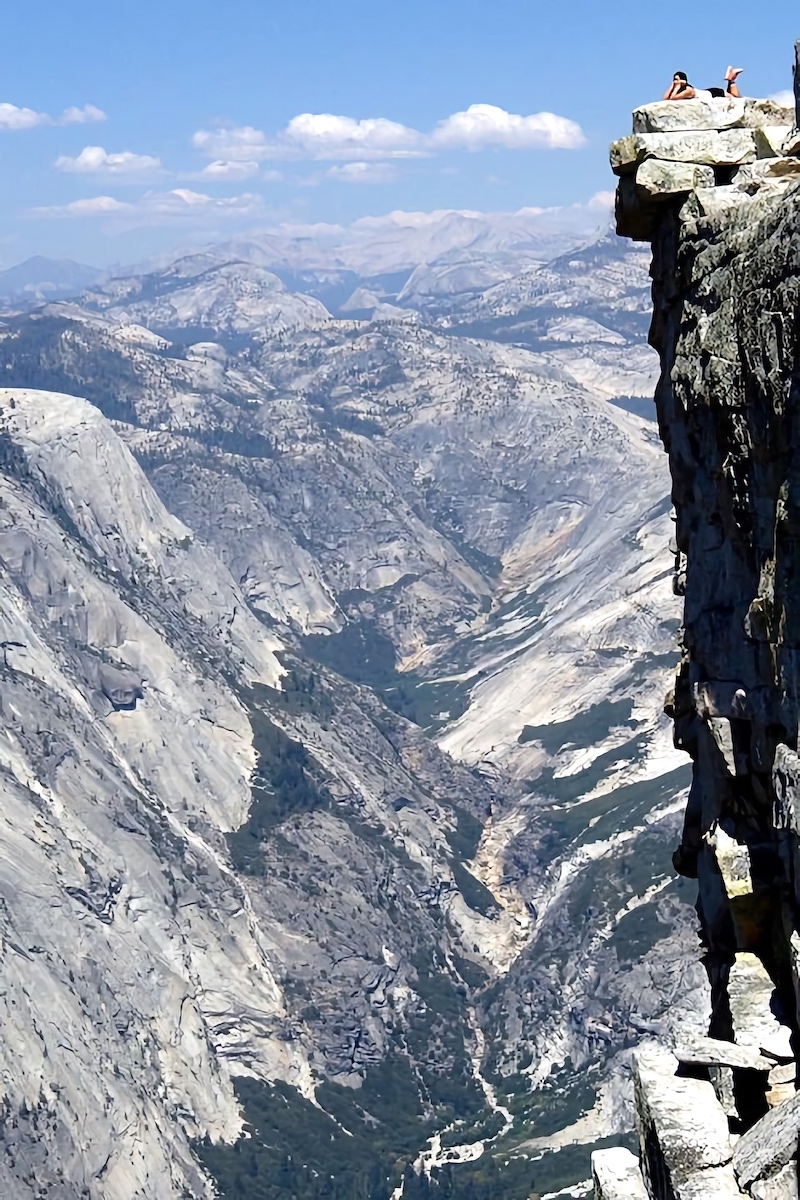
⋯

Tai Chi and (Chai) Tea ⟩
January 23, 2014, by Clarissa
Classes Community Diversity What are OS/OT?
This morning, I saw a group of older adults practicing Tai Chi in a park nearby my house and I felt so happy! Why, you ask? I took a class last semester geared towards creating a community project. My group members and I interviewed experts, talked to community members, and designed a program for (you guessed it) Tai Chi!
Older adults are often at risk for falls and social isolation. In our research regarding Tai Chi, we found evidence in the literature supporting Tai Chi’s positive effects on fall prevention in older adults — it helps with factors contributing to falls like balance, coordination, and fear of falling. To address fall risk and social isolation, we decided to write a proposal for creating a Tai Chi class followed by time to socialize with tea. The social relationships built through tea time could also motivate the older adults to join our class.
We decided our target population would be older adults in Monterey Park, a city just east of downtown LA. The city has a 66.9% Asian population. In our research, we also found that Asians were less likely to talk about their lifestyle to their health providers so they may have needs that aren’t being met. The cultural familiarity of Tai Chi (and the tea!) may work to encourage their attendance to our program.
To explain the title of this blog post — my group really wanted to name our project Tai Chi and Chai Tea but had to very sadly let go of it. Chai tea’s sugar content may not be the best for older adults. The title lives on here. Woohoo!
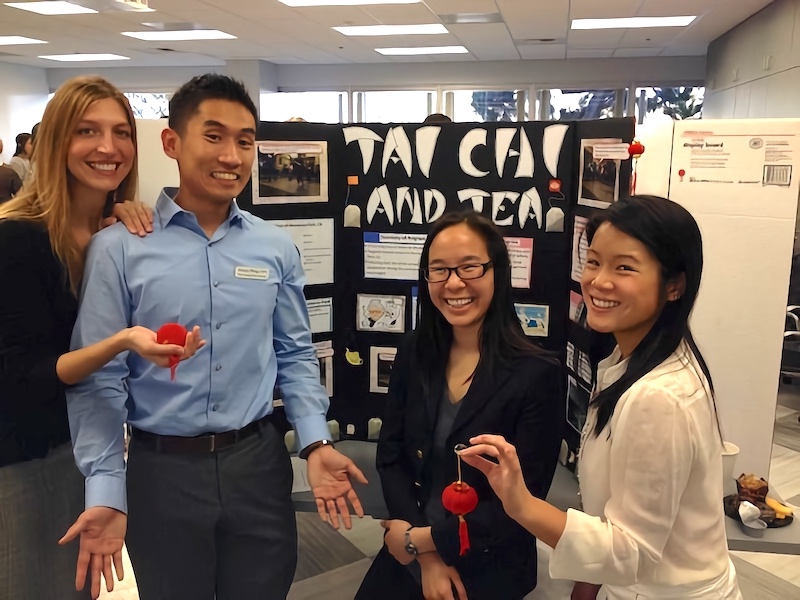
Here’s a picture of me and my awesome group on poster presentation day!
⋯

Learning More About Occupational Science ⟩
January 23, 2014, by Kate
What are OS/OT?
Sometimes it’s difficult to find other people who know what occupational therapy is, but think about the mystery that is occupational SCIENCE. People look at me like I’ve misspoke when I tell them more about our Division at USC and the classes I am currently taking. “Occupational science? What is that? Do you use microscopes and test tubes?” Not exactly. We have been introduced to the concept of occupational science since our first semester, but now as second-year students, we are all taking a Seminar in Occupational Science 2-unit course. Today I will be attending my second class of the semester, and the experience thus far has been really interesting!
From what I know, the concept of occupational science was actually founded at the University of Southern California in the 1980s when the university offered PhD degrees in the field for the first time. It’s crazy to think that our school has been such a leader in our profession!! Occupational science can roughly be defined as the study of human activities (occupations) and how participation and engagement in these activities impacts our lives. This class is really helping to bring all the concepts we have learned over 2 years into full circle.
⋯





